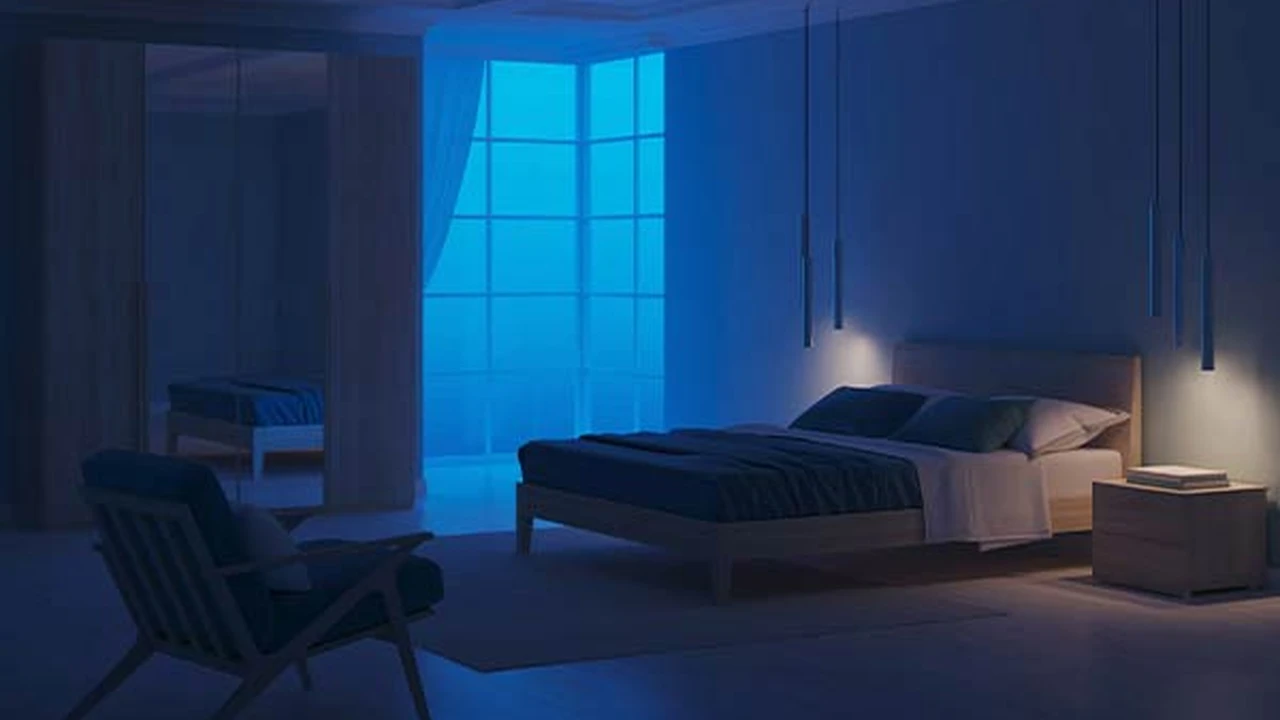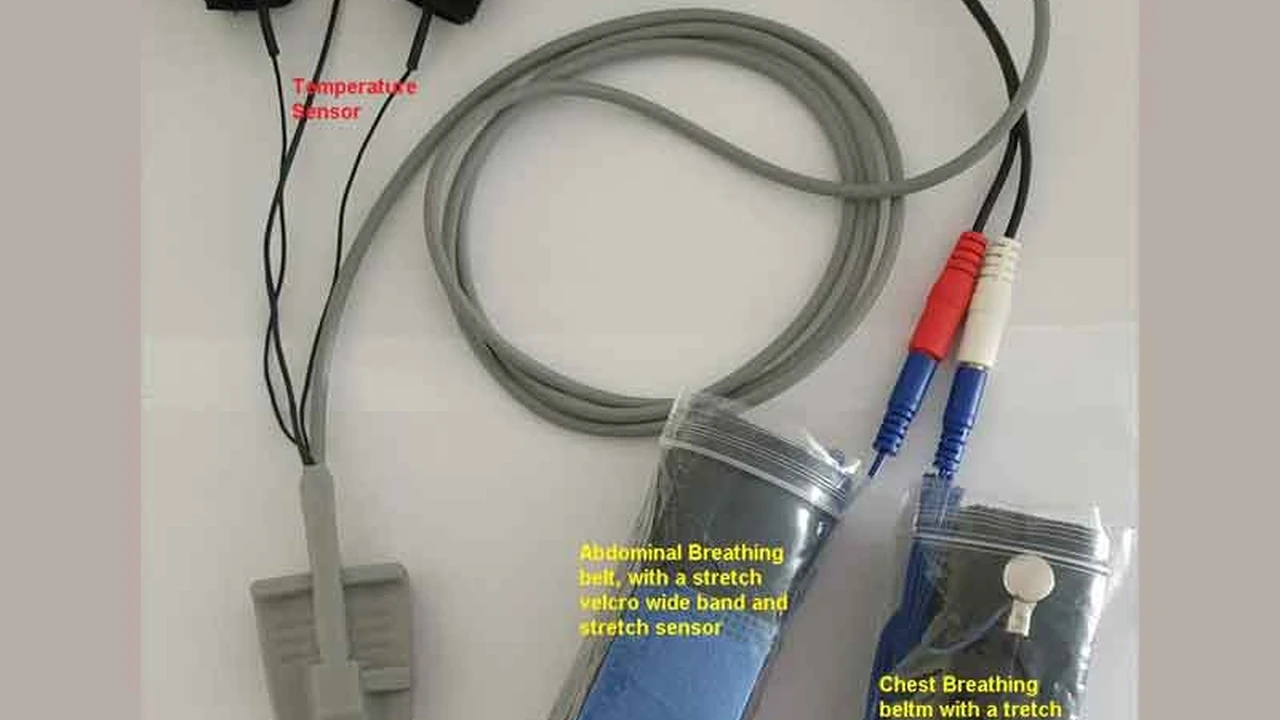Bedroom Lighting for Optimal Sleep
Design your bedroom lighting to promote melatonin production and restful sleep. Create a dark and calming sleep sanctuary.

Bedroom Lighting for Optimal Sleep Your Ultimate Guide
Understanding Light's Impact on Sleep Melatonin and Circadian Rhythms
Hey everyone, let's talk about something super important for your sleep that often gets overlooked: light. It might seem simple, but the kind of light you expose yourself to, especially in your bedroom, plays a massive role in how well you sleep. We're not just talking about whether it's bright or dark; it's about the color, intensity, and even the timing of that light. Your body has this amazing internal clock called the circadian rhythm, and it's heavily influenced by light. Think of it as your personal timekeeper, telling you when to be awake and when to wind down.
The star player in this whole light-sleep connection is melatonin. This hormone is often called the 'sleep hormone' because it helps regulate your sleep-wake cycle. When it gets dark, your brain starts producing more melatonin, which makes you feel sleepy. Conversely, when it's bright, melatonin production is suppressed, keeping you alert. The problem is, our modern lives are filled with artificial light, especially blue light from screens, which can trick our brains into thinking it's still daytime, even late at night. This messes with melatonin production and can make it really hard to fall asleep and stay asleep.
So, the goal here is to create a bedroom lighting environment that supports your natural circadian rhythm and encourages melatonin production. This means thinking about both the light you want in your bedroom and, perhaps more importantly, the light you want to keep out.
Optimal Bedroom Lighting Strategies Creating Your Sleep Sanctuary
Alright, let's get practical. How do we actually make our bedrooms sleep-friendly with light? It's a multi-faceted approach, but totally doable.
Dimming the Lights Gradual Transition to Darkness
One of the simplest yet most effective strategies is to gradually dim your lights as evening approaches. Just like our ancestors experienced the sunset, your body needs a signal that night is coming. About 1-2 hours before bed, start lowering the light levels in your home, especially in your bedroom. Avoid harsh overhead lights. Instead, opt for softer, warmer lamps. This gentle transition helps your brain kickstart melatonin production naturally.
Warm Light vs Cool Light Color Temperature Matters
This is a big one. Not all light is created equal. Light is measured in Kelvin (K), which indicates its color temperature. Higher Kelvin numbers (like 5000K-6500K) produce cool, blue-white light, similar to daylight. Lower Kelvin numbers (like 2700K-3000K) produce warm, yellowish light, similar to a traditional incandescent bulb or candlelight. For your bedroom, especially in the evening, you want warm light. Blue light, even from seemingly dim sources, can be very disruptive to melatonin. So, swap out those cool-white LED bulbs for warm-white ones in your bedroom and any areas you frequent before bed.
Avoiding Blue Light Exposure Digital Devices and Screens
This is probably the biggest culprit for modern sleep issues. Our phones, tablets, computers, and TVs all emit significant amounts of blue light. As we discussed, blue light tells your brain to stay awake. The best advice? Implement a strict 'no screens in the bedroom' rule, especially in the hour or two before you plan to sleep. If you absolutely must use a device, enable night mode or blue light filters, which shift the screen's color temperature to a warmer hue. Better yet, consider blue light blocking glasses if you're a night owl who can't avoid screens entirely.
Blackout Curtains and Blinds Blocking External Light
Even if you've perfected your indoor lighting, external light can still wreak havoc. Streetlights, car headlights, and even early morning sun can disrupt your sleep. This is where blackout curtains or blinds become your best friend. They are designed to block out nearly 100% of external light, creating a truly dark sleep environment. This is crucial for maintaining melatonin levels throughout the night and preventing premature waking. Look for options that have a tight seal around the edges to prevent light leakage.
Nightlights and Motion Sensor Lights Minimal Disruption
Sometimes you need a little light in the middle of the night for a quick trip to the bathroom. The key is to use the absolute minimum amount of light necessary, and make sure it's a warm, dim light. Small nightlights that plug into outlets, or motion-sensor lights that activate briefly, are perfect. Avoid turning on overhead lights, which will instantly signal to your brain that it's morning.
Recommended Products for Optimal Bedroom Lighting Specifics and Comparisons
Okay, let's get into some actual product recommendations. There are tons of options out there, but I'll highlight a few categories and specific products that are highly rated and effective.
Smart Bulbs and Lighting Systems The Future of Sleep Lighting
Smart bulbs are fantastic because they offer unparalleled control over color temperature and dimming. You can schedule them to gradually dim in the evening and even change to a warm, amber glow. Some can even simulate a sunrise in the morning to gently wake you up.
- Philips Hue White and Color Ambiance Smart Bulbs: These are probably the gold standard. They offer a huge range of colors and white temperatures (from cool to very warm). You can control them via an app, set schedules, and integrate them with smart home systems like Alexa or Google Home. They are a bit pricier, usually around $40-$50 per bulb, but the flexibility is unmatched. You'll need a Philips Hue Bridge for full functionality, which is an additional cost (around $60).
- LIFX Mini White Smart Bulbs: A great alternative to Philips Hue, especially if you don't want a separate hub. LIFX bulbs connect directly to your Wi-Fi. They offer excellent dimming and a good range of warm white temperatures. Price-wise, they are similar to Hue, often $30-$40 per bulb.
- Wyze Bulb Color: If you're on a budget, Wyze offers surprisingly good smart bulbs. They are very affordable, often under $15 per bulb, and still offer color changing and dimming. They connect via Wi-Fi and integrate with the Wyze ecosystem. The color accuracy might not be as precise as Hue or LIFX, but for basic sleep optimization, they are excellent value.
Usage Scenario: Set a 'sleep routine' in your smart lighting app. For example, at 8 PM, lights dim to 50% and shift to 2700K. At 9 PM, they dim to 20% and shift to 2200K (a very warm, amber glow). At 10 PM, they turn off completely. This automates your light transition.
Dedicated Sleep Lamps and Alarm Clocks Gentle Wake-Up and Wind-Down
These devices are specifically designed with sleep in mind, often incorporating sunrise/sunset simulations and calming sounds.
- Philips SmartSleep Sleep and Wake-Up Light (HF3520/60): This is a popular choice. It simulates a natural sunrise to wake you gently with gradually increasing light, and a sunset to help you wind down. It also includes various nature sounds and FM radio. It's not cheap, usually around $100-$150, but many users swear by its effectiveness for a more natural wake-up.
- Hatch Restore: This is a multi-functional device that combines a sound machine, smart light, and alarm clock. It offers customizable routines for winding down (e.g., reading light, meditation, soundscapes) and waking up (sunrise alarm). It's controlled via an app and is very user-friendly. Price point is typically around $130.
Comparison: The Philips SmartSleep is more focused on the light aspect of waking and sleeping, while the Hatch Restore offers a more comprehensive 'bedside companion' experience with its sound and app integration. Both are excellent for gentle transitions.
Blackout Curtains and Blinds The Essential Darkness
Don't underestimate the power of true darkness. These are non-negotiable for many people, especially those in urban areas or shift workers.
- Nicetown Blackout Curtains: These are widely available and highly rated on Amazon. They come in various sizes and colors, and effectively block out light. Look for options with a thermal lining, which also helps with insulation. Prices vary by size, but generally range from $20-$50 per panel.
- Blackout EZ Window Covers: These are custom-fit blackout panels that attach directly to your window frame with Velcro, creating a near-perfect seal. They are fantastic for complete darkness, especially for nurseries or very light-sensitive individuals. They are more expensive than standard curtains, as they are custom-made, often $50-$100+ per window.
- Redi Shade Original Blackout Pleated Paper Shade: A super affordable and temporary solution, great for renters or travel. These are paper shades that you cut to size and stick to your window. They block a surprising amount of light for their price (around $10-$15).
Usage Scenario: Install blackout curtains that extend beyond your window frame and have a good rod to prevent light leakage from the top. For maximum darkness, consider adding a valance or a cornice box above the curtain rod.
Blue Light Blocking Glasses Protecting Your Eyes
If you absolutely cannot avoid screens in the evening, these are a good fallback.
- Swannies Blue Light Blocking Glasses (Amber Lens): These are popular and effective. The amber lenses block a significant amount of blue light, making them ideal for evening use. They come in various styles and usually cost around $60-$80.
- Uvex Skyper Blue Light Blocking Computer Glasses: A more industrial-looking but highly effective and affordable option. These are often used by gamers and those who spend long hours in front of screens. They are very effective at blocking blue light and typically cost under $15.
Comparison: Swannies offer more style and comfort for everyday wear, while Uvex are a no-frills, highly effective budget option.
Beyond the Bedroom Lighting for Your Entire Home
While the bedroom is crucial, think about the lighting in other areas of your home, especially those you use in the evening. Your living room, kitchen, and even hallways can impact your sleep. Consider using warmer, dimmer bulbs in these areas as well, or at least having lamps with warm light as an alternative to bright overhead fixtures. The goal is to create a gradual transition from bright, stimulating light during the day to dim, calming light in the evening throughout your living space.
Maintenance and Habits Keeping Your Sleep Lighting Optimized
It's not just about setting up the right lights; it's about maintaining good habits. Regularly check your bulbs to ensure they are the correct color temperature. Dust your lamps and fixtures to ensure maximum light output (or dimming capability). Most importantly, be consistent with your evening light routine. Your body thrives on routine, and consistent light exposure patterns will reinforce your natural sleep-wake cycle. Make it a habit to dim the lights, put away screens, and embrace the darkness as your bedtime approaches. Your sleep will thank you for it!
:max_bytes(150000):strip_icc()/277019-baked-pork-chops-with-cream-of-mushroom-soup-DDMFS-beauty-4x3-BG-7505-5762b731cf30447d9cbbbbbf387beafa.jpg)





